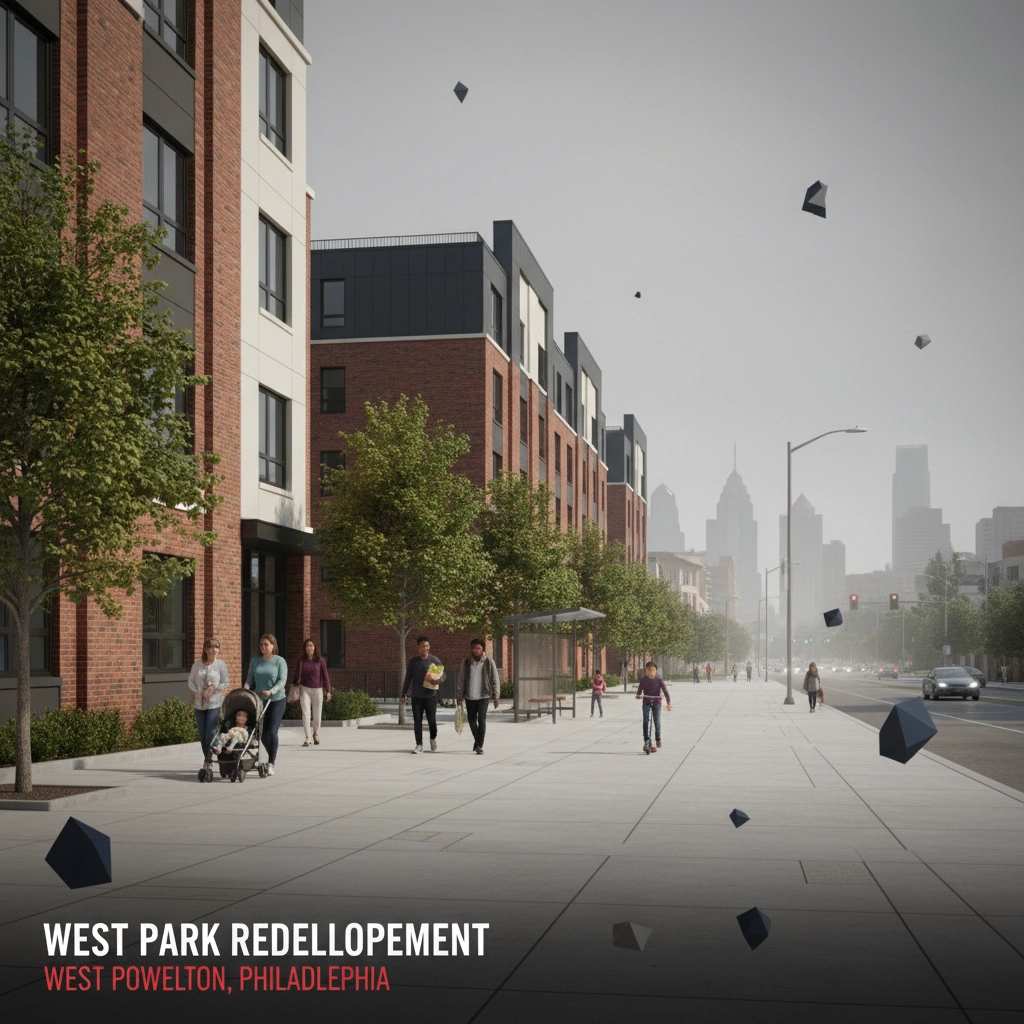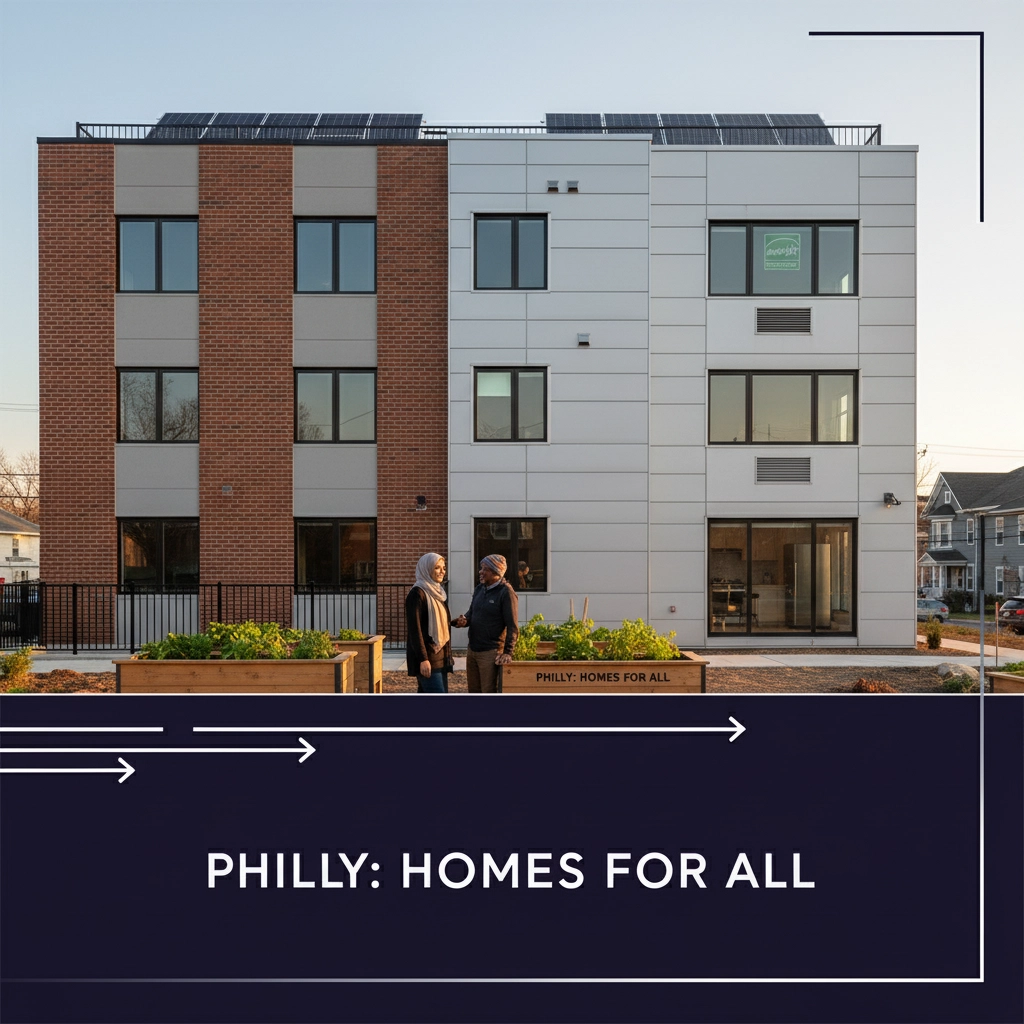Looking For Affordable Housing? Here Are 10 Things You Should Know About Philadelphia's New 1,900 Rental Units
- Philadelphia Affordable Housing
- Oct 30
- 4 min read
Philadelphia's affordable housing landscape is changing fast, and there's some seriously good news if you're looking for a place to call home. With multiple major projects in the works and billions in funding committed, the city is making moves to create thousands of new affordable rental units. Here's what you need to know right now.
1. Mayor Parker's $2 Billion H.O.M.E. Plan is Game-Changing
In March 2025, Mayor Cherelle L. Parker dropped some major news with her Housing Opportunities Made Easy (H.O.M.E.) Plan. We're talking about a massive $2 billion investment that'll create and preserve 30,000 homes across Philadelphia.
This isn't just talk – the plan includes producing 13,500 brand new housing units and preserving 16,500 existing homes. The first $400 million in bonds is set to roll out in fiscal year 2026, so things are moving quickly.

2. West Park Apartments Will Create 1,000 New Units
The West Park Apartments redevelopment in West Powelton is one of the biggest single projects happening right now. This transformation will create 1,000 units, and here's the best part – 60% of them will be deed-restricted for affordability.
The breakdown looks like this:
40% deeply affordable units
20% for residents earning 40-60% of area median income
20% for those earning 80-120% of area median income
20% market-rate units
Construction started in Q3 2025, with the first phase expected by late 2027 or early 2028.
3. PHA is Investing $6.3 Billion Over Eight Years
The Philadelphia Housing Authority isn't messing around. They're planning to preserve, redevelop, build, or acquire roughly 20,000 units over eight years with a $6.3 billion investment.
As of now, 8,772 units are either completed, under construction, or in the pipeline, with about $2 billion already spent or allocated. That's real progress you can count on.
4. Multiple Income Levels Are Being Targeted
One of the smartest things about these new developments is that they're not just focusing on one income bracket. The city recognizes that affordable housing means different things to different families.
You'll find units designed for:
Extremely low-income families (under 30% AMI)
Very low-income families (30-50% AMI)
Low-income families (50-80% AMI)
Moderate-income families (80-120% AMI)
This mixed-income approach helps create more stable, diverse communities.

5. Application Processes Are Getting More Streamlined
Gone are the days of navigating a dozen different application systems. The city is working to make applying for affordable housing less of a headache. Many of the new developments will use centralized waiting lists and clearer qualification criteria.
If you're thinking about applying, start gathering your documents now:
Proof of income for all household members
Social security cards and birth certificates
Bank statements
Employment verification letters
6. Location Matters More Than Ever
These new affordable units aren't being stuck in forgotten corners of the city. Many are being developed in neighborhoods with good transit access, schools, and job opportunities. The West Park project, for example, is strategically located with decent SEPTA access.
When you're looking at options, consider:
Distance to your job or job opportunities
School districts if you have kids
SEPTA routes and walkability
Access to grocery stores and healthcare
7. Some Units Come With Additional Support Services
Many of the new affordable housing developments include more than just a roof over your head. Some offer:
Financial literacy programs
Job training and placement assistance
Childcare services
Health and wellness programs
Community gardens and shared spaces
These wraparound services can make a real difference in helping families build stability and economic mobility.

8. Energy Efficiency is Built Into New Construction
The new affordable housing units being built aren't just cheap to rent – they're designed to be cheap to live in. Most include energy-efficient appliances, better insulation, and sometimes even solar panels.
This means lower utility bills for you, which is basically like getting a rent reduction every month. In some cases, residents report saving $50-100+ monthly on utilities compared to older housing stock.
9. Waiting Lists Are Still Competitive, But Worth It
Let's be real – good affordable housing in Philadelphia is still in high demand. You might face waiting lists, but the quality of these new units makes the wait worthwhile.
Pro tips for improving your chances:
Apply early and often to multiple properties
Keep your contact information updated
Respond quickly to any communication
Consider slightly longer commutes for better odds
Look into preference categories you might qualify for
10. There Are Multiple Pathways to Access
Don't put all your eggs in one basket. Philadelphia has several different programs and funding sources creating affordable housing:
Housing Choice Voucher (Section 8) accepted properties
LIHTC (Low-Income Housing Tax Credit) developments
City-funded affordable housing projects
Mixed-income developments with affordable set-asides
Employer-assisted housing programs
Each has slightly different qualification requirements and application processes, so explore all your options.
Getting Started
The bottom line? Philadelphia is investing serious money in creating quality affordable housing, and there are more opportunities coming online than we've seen in years. The key is staying informed and being proactive about applications.
If you're ready to start your search, check out our resources at Philadelphia Affordable Housing where we keep an updated list of available units and application deadlines.
The housing situation in Philadelphia isn't perfect yet, but it's getting better fast. With billions in funding committed and thousands of units in development, 2025 and beyond are looking pretty promising for renters who need affordable options.
Don't wait – start your application process now, because the best units in these new developments are going to fill up quickly. Your future home might be closer than you think.



Comments